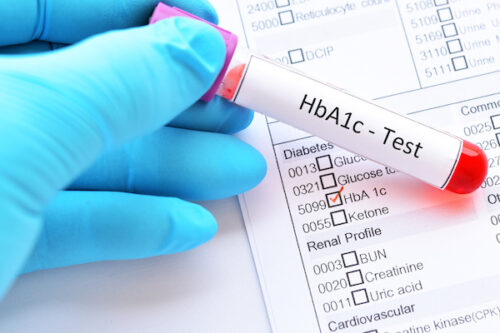The McDougall Program Cures People: The Risk Factor Improvements Are Incidental
People are focused on their numbers, also known as risk factors – so here are the results for the first 307 people treated in the McDougall Program in Santa Rosa, CA:
|
Reductions of Common Risk Factors with 7 Days of a Healthy Diet:(Averages for total patients and subgroups) |
|
Cholesterol = -17 mg/dl When initially below 190 mg/dl = -10 mg/dl When initially above 189 mg/dl = -25 mg/dl Triglycerides = -2 mg/dl When initially above 149 mg/dl = -30 mg/dl BUN = -3.5 mg/dl Blood Sugar = -1 mg/dl (all diabetic medications stopped for type-2 diabetics) Type-2 Diabetics (BS initially above 149 mg/dl), medications stopped = -5 mg/dl Systolic Blood Pressure = -8.5 mmHg (hypertensive medications stopped, usually day 1) When initially 120 mmHg or higher = -12 mmHg When initially 140 mmHg or higher = -15 mmHg Diastolic Blood Pressure = -6.0 mmHg (hypertensive medications stopped, usually day 1) When initially 80 mmHg or higher = -9 mmHg When initially 90 mmHg or higher = -13 mm Hg Body Weight = -3.5 pounds Maximum Weight Loss Program = -4.5 pounds
(Almost the exact same results have been obtained with the nearly 2000 people who were treated with the McDougall Program, held between 1986 and 2001 at St. Helena Hospital, Napa Valley, CA.) |
All results occur concurrently, medications are discontinued, and most importantly the patients become healthier, because the underlying cause of their diseases – severe malnutrition from the Western diet – is corrected. Primarily, the benefits come from switching to a health-supporting diet based on starches, vegetables, and fruits. Secondarily, exercise and stopping ‘bad habits,’ like coffee and alcohol, help.
Modern Medicine Provides Results without Real Benefits
The typical well-treated patient living in an ‘advanced society’ is fat, sick, and overmedicated. Justifying all this misery, the medical and pharmaceutical businesses brag all the way to the bank about improvements of their customer’s risk factors (incidental numbers forced to lower values by drugs).
Attend a luncheon conference at your local hospital. Your suspicions will be sparked by the drug-detail person seated in the back of the conference room – she paid for the lunch and the ‘expert’ speaker. Your doctor is being taught by one of the big pharmaceutical companies, like Merck, Upjohn, or Lilly, how to treat your signs (risk factors) and symptoms with 10 to 20 expensive drugs. But no one is learning about how to restore your lost health and appearance.
I am not suggesting your trusted doctor is in cahoots with big business, purposefully trying to keep you sick and buying products and services. Doctors are simply displaying normal human behavior. Stop for a moment and impartially look at the industries you have worked with. What determines their activities? Profit. Always profit. Why should people working for the medical and pharmaceutical enterprises have higher principles? You say, ‘Because the lives of my loved ones are at stake.’ Grow up – stop elevating those in the healthcare industries to ‘god-like’ status. Give them the same respect you would anyone else you do business with, like your bank loan officer or used car dealer.
|
Treatment of Signs (Risk Factors) and Symptoms |
|
The Well-Treated Patient Requires the Following*,
Cholesterol = Lipitor Triglycerides = Lopid Blood Pressure = Norvasc Blood Sugar = Diabinese Uric Acid = Zyloprim Homocysteine = folic acid Heart attack prevention = Plavix Kidney protection = Zestril Arrhythmia prevention = Atenolol Blood Clots and Strokes = Coumadin Reduced BMD (osteoporosis) = Fosamax Menopause = Provera/Premarin Impotence = Viagra Depression = Prozac Obesity = Orlistat Headaches = Darvocet Nasal Allergies = Allegra Body aches = Celebrex Indigestion (GERD) = Prilosec Constipation = MiraLax Diarrhea = Lomotil Body odors = deodorants and perfumes
You would be surprised by how frequently patients are on not one or two, but multi-drug combinations of these medications, until they change their diets or die.
*Examples of drugs treating risk factors. Realize there are hundreds of similar drugs sold to you to treat these same signs and symptoms of disease. |
Risk Factors are Signs of Disease – Not Disease
Real benefits from the drug approach to disease are limited and/or of questionable value, because they fail to treat the underlying problem – malnutrition. Instead, they treat the signs (risk factors) that result from years of eating high-fat, high-cholesterol, high-sugar, highly-refined foods. You can think of these signs as ‘warning flags’ sent out by your body in an attempt to tell you that there is ‘trouble down below’ – within your body. But people do not die from signs of their diseases. I have never seen a patient die of high cholesterol, or high blood sugar, or even high blood pressure. What do people showing these elevated risk factors die of? Sudden closure of an artery supplying the heart or brain – in common words, a heart attack or stroke (only two of many possible examples of common diseases caused by people following the Western diet).
Here is an analogy to help you understand the consequences of misdirected treatments. Imagine for a moment that you are a doctor working in an emergency room. Through the doors late one evening a semi-comatose patient is wheeled in. You ask your nurse to collect the vital information. After making her evaluation, she reports to you that the patient is coughing, has a fever of 104 degrees, and has an infected lung (pneumonia). After some serious contemplation you recommend aspirin, to treat the fever (one sign he has pneumonia). Within an hour you have a patient with a normal body temperature, and 30 minutes later he is dead. Are you proud of your medical care? If you had directed your attention to the infected lung (pneumonia) and used antibiotics, then your patient would have lived, and by the way, his temperature would have also come down to normal in a short time.
I have witnessed doctors bragging about how well they had controlled a patient’s blood pressure while the patient was lying in the ICU dying of a heart attack. Was that good service? – To allow his patient’s arteries to continue to rot with a ‘well-treated’ blood pressure. Instead, the doctor’s attention should have been focused on teaching the importance of a healthy diet and lifestyle, rather than stuffing the trusting patient with pills.
Monitor and Treat Risk Factors Carefully
Risk factors are signs giving you important information – for example, an elevated cholesterol means the plaques in your arteries are at risk of bursting. This information can serve to motivate, and armed with all the right information, can produce a cure.
After I have brought to life every bit of good health my patients have with a proper diet and some lifestyle changes, I will cautiously treat risk factors with medications, because in some cases the benefits from this drug therapy outweigh the risks and costs.
Here are some examples of actions I take when risk factors remain elevated:
Cholesterol: For high risk patients, I use statins or niacin with cholesterol-binding-agents to lower cholesterol below 150 mg/dl. Determining who is at high risk is a judgment call (an educated guess). A patient with a history of heart disease or stroke will usually get a prescription from me. (See my newsletter articles: September 2002: Cholesterol – When and How to Treat; June 2003: Cleaning Out Your Arteries.)
Hypertension: After several months of monitoring, I will treat levels of blood pressure of 160/100 mmHg or greater. I usually use diuretics (chlorthalidone) first, and then beta blockers next. I am cautious to not lower the pressure below 140/85 mmHg with medications. (See my newsletter articles: August 2002: Take Blood Pressure at Home – Get Off Your Medications; July 2004: Over-treat Your Blood Pressure and You Could Die Sooner.)
Type-2 Diabetes: I usually do not give medications unless the patient is losing too much weight or has symptoms of diabetes (excessive thirst or urination). Very elevated blood sugar levels can be of concern to the patient and his family (such as levels above 350mg/dl). For everyone’s peace of mind, I may use medications to bring about better-looking numbers. Also, if the patient were to become ill or injured, then insulin might be necessary during this period of extreme physical stress. (See my newsletter article: February 2004: Type-2 Diabetes – the Expected Adaptation to Overnutrition.)
Triglycerides: For high risk patients with levels above 300 mg/dl, I may give niacin or statins. (See my newsletter article: February 2003: Niacin – A Time Honored Treatment for Cholesterol and Triglycerides.)
Uric acid: I will use colchicine and/or allopurinol for patients with a history of uric acid stones or gout. I do not treat solely because of an elevated uric acid level.
Obesity: If there were effective drugs, I might use them in severely overweight patients, who are unwilling or unable to change their diet and to exercise (a combination which is always a cure). Bariatric surgery is effective and special cases may warrant such extreme treatment. (See my newsletter articles: December 2004: Lose a Half Pound a Day – Set Point; January 2005: Pushing Your Set Point to the Limits – The McDougall Program for Maximum Weight Loss.)
Have You Pushed Your Health to the Limits?
The McDougall Program gets results in 7 days. You can do anything for 7 days. If you have not already done so, I challenge you to follow a diet based on starches with the addition of fruits and vegetables. And go for a daily walk. Before you start, talk to your doctor. Have your blood pressure and body weight recorded. Check out some basic blood tests, like cholesterol, triglycerides, and blood sugar. Discuss the medications you are now taking with your doctor and seek advice for adjustments. (I find that it is usually safe to reduce or discontinue most medications, especially if in doubt.) Recheck everything in 7 days.
My experience has been that you will have made more subjective and objective improvements in less than one week, at no cost, than you have made in years of buying thousands of dollars worth of ‘powerful drugs.’ Take my challenge and you will not only see better numbers, but you will experience the improved health and personal appearance you deserve.
Recommended Articles
Take Blood Pressure at Home – Get Off Your Medications

The Latest Scams from the Diabetic Industry






